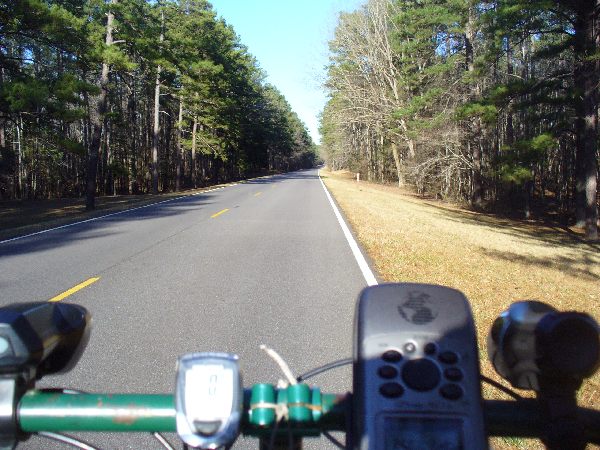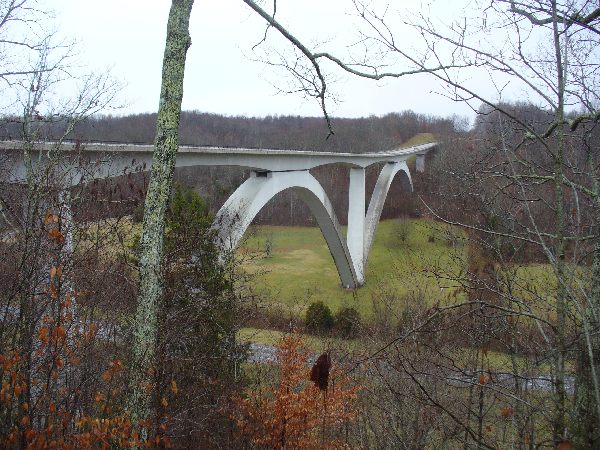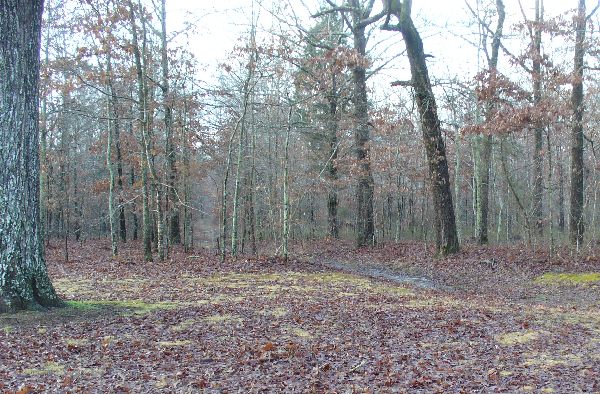For four days now we have been traveling the Natchez Trace, a trail that served the “Old Southwest” from about 1775 to 1820 or so. It was declared a National Post Road in 1800 and many improvements were made to it by the US Army and civilian contractors. With the coming of the steam paddlewheel river boats on the Mississippi and Tennessee Rivers the Natchez Trace fell into disuse and slowly melted back into the undergrowth.
The “Trace” as we are seeing it began in the late 1930’s as a project for the CCC, the Civilian Conservation Corps. It parallels the old Natchez Trace and indeed we have walked on preserved segments of the old roadway. The modern day parkway is 440 miles of two lane paved roads. There are essentially no crossroads, no stop lights and practically no towns for the full length. You can set the cruise control for 50 and just steer for 440 miles. All of the grades are mild and the curves are gentle. The right-of-way is broad and gently sculpted and mowed. Occasionally farms crowd up to the parkway, but for the most part you are driving through beautiful rural woodlands.
We have been spending so much time stopping at all of the historic locations and hiking and exploring that we are hard pressed to make 70 or 80 miles each day. We have camped in two of the National Park’s campgrounds. They are first-come-first-served, with no electric and no cost. Also they are mostly empty.
Back then there were 20 inns along the trace. They were called “Stands.” They were about 20 to 25 miles apart. You whisked along on this super highway of yester-year with your wagon axle deep in mud or dust, depending on the season. We saw one segment of the trace where there were three distinct roads. When one mud wallow got to deep to get through they would cut a new path through the trees and move it over.
Now the most evidence we see of the “Stands” is a memorial sign and perhaps some stone blocks in the ground representing the foundation. This area is crisscrossed with creeks, streams and rivers. This time of year we see lots of standing water and cypress swamps. We whisk over these waterways on modern bridges and don’t think about them for even a moment. Back then each stream had to be forded and rivers had to be crossed on ferry boats. It must have been exciting in 1803 when the first Post Rider came into Tockshish’s Stand, five days out of Nashville and seven more days to Natchez. At the time, perhaps, this feat was in the league with our modern achievement of putting a man on the moon. Imagine, instant messaging from Nashville to Natchez in only 12 days.
Oh, I forgot to identify the original reason that the Natchez Trace came into existence. You see those “good old boys” from the Tennessee valley would build themselves a raft or river flat boat and load all their hides or grain or produce aboard and float and row them down to New Orleans. They would sell their goods and break up the boat and sell the timbers and lumber. Now the river system at the time was kind of one way. So they had to walk back. That series of game and Indian trails eventually became the Natchez Trace.
Today we camped early. The weather was sunny and bright so we unloaded “Path” from his trailer. Poor fellow has been sort of neglected and had a flat tire. I replaced the tire and we gave “Path” his head and before we knew it we were ten miles back up the Trace. Along the way we met and befriended a bicycle rider from Muscle Shoals Alabama. Jason is a recent college graduate in Architecture at Auburn and he is on his way to Portland Oregon.
Tomorrow we will get underway again. Perhaps Jason’s bicycle will ride with “Path” in the trailer as we plan to give Jason a lift to Jackson Mississippi on his way to Portland.
I still prefer the modern day Natchez Trace. Slogging through the mud just doesn’t sound like that much fun.
Love to all from Gary and Judy on the Natchez Trace in Mississippi.


